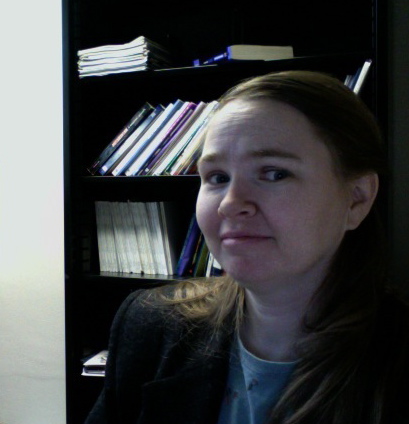
e-mail:
laurel.langford@uwrf.edu
My office location: 207B NH
My office phone number:
715-425-4360
Syllabus
Useful Links:
 |
Contact
me: e-mail: laurel.langford@uwrf.edu My office location: 207B NH My office phone number: 715-425-4360 |
Grading
policies, etc Syllabus |
Useful Links: |
| Week of July 22: Assignments due
July 23/25 |
First read this introduction to me and to the class.
Please also read the Syllabus
|
| Week of July 22: Review
readings/videos and practice |
I would like you to do some review of topics that I think most of you have seen before.
|
| July 29 AM: Systems of equations, Row Operations and Graphs. |
Notes 1-3: What does it mean to be a solution to a system of equations? Why does a system of equations, and the transformed system after you do a row operation, have the same solution set? (In particular, why doesn't the solution change when you do the row operation where you add two equations together?) How can you get an arbitrary linear combination of two rows (aR1+bR2) by doing a pair of row operations? Notes 4: Graphs of systems of equations: what sorts of graphs do you get when you graph a linear combination of two equations? Notes 5a: One way to prove that you can get all possible lines that go through the intersection point. Notes 5b: Another way to prove that you can get all possible lines that go through the intersection point. Homework problem 1.1 (due Wednesday): For the pair of equations: 3x+2y=5 and 2x-3y=1; prove that linear combinations of these equations include every line that goes through the point (2,1). |
| PM: How many computations does it take to solve a system or find a determinant? |
First example: you can solve a system by elimination or by Cramers Rule Notes 2-3: The 3 defined row operations each affect the determinant in a specific way, and you can use that information to find the determinant of a matrix if you keep track of elimination steps. Joleen's cup stacking handout/lesson plan Homework problem 1.2 (discuss in class Tuesday): Work on the examples you started/planned in class to try to find a pattern that will tell you either: a. When is it more efficient (takes fewer computations) to use elimination vs. Cramer's rule to solve a system of equations. b. When is is more efficient (takes fewer computations) to use elimination vs expansion to compute a determinant. |
| July 30 AM: Sharing lessons on systems of equations and HW 1.2 |
|
| July 30 PM: Vector spaces |
Notes: What is a vector space? What is a basis of a vector space? |
| July 31: More vector spaces, bases, transformations and matrix multiplication. |
To Do: Watch this video on linear transformations and matrix multiplication Then watch this video on dot products and projections of vectors. Finally, look up how to find an inverse of a matrix (in your textbook or Wikipedia or something), and do a practice problem (it can be an example or problem from the text book). I recommend using the strategy of your choice to find the inverse of a 3x3 matrix. There are two ways to find inverse matrices. It probably won't surprise you that I, personally, prefer elimination to determinants. We'll talk about the whys tomorrow. Notes: Using a matrix to tell if vectors are linearly independent You need at least as many vectors as coordinates for your vector space in order for the set of vectors to span the vector space How to use a matrix to tell if vectors span a vector space: R4 examples; R3 examples. Linear Transformations |
| Aug 1: inverses, dot products and projections |
Practice problems for test 1: as a Word file; as a .pdf file.
Work as many of these as you reasonably can before Monday.
There's a lot of redundancy in the problems, and while I'm planning to
collect this eventually, I'm only planning to look at your answers to
#2, 3, 7, 10, 15, 16b, 19 c, d, f, 22, 26, and it's quite possible I
won't even look at those. These should get you ready for the test
(12-16 are designed to help you make some new connections or cement
some half-made connections). I'm willing to spend up to half of
Monday's class discussion questions you have on this. Some notes: Making sense by algebra of why we can use Gaussian Elimination to find the inverse of a matrix. Making sense by the geometry of transformations of why we can use Gaussian Elimination to find the inverse of a matrix. Making sense of why we can use determinants to find the inverse of a matrix. Using a dot product to find a projection. |
| Aug 5 |
Please read this explanation of what we are going to do with finding a least squares fit using linear algebra: https://medium.com/@andrew.chamberlain/the-linear-algebra-view-of-least-squares-regression-f67044b7f39b Check out the solutions to problems 1-7, especially problem 7. Solutions to 8-17. Solutions to 18-26 |
| Aug 8 |
Well, it looks like I dropped th ball on updating the web site this week. Here are some files: The trisection flowchart The trisection problem sheet (not all problems will be assigned, but some of them will) The details of the final project assignment (if you have questions or requests let me know) |
| Week of Aug 12 |
Here is the review for test 2 problems Here is the review for test 2 answers |